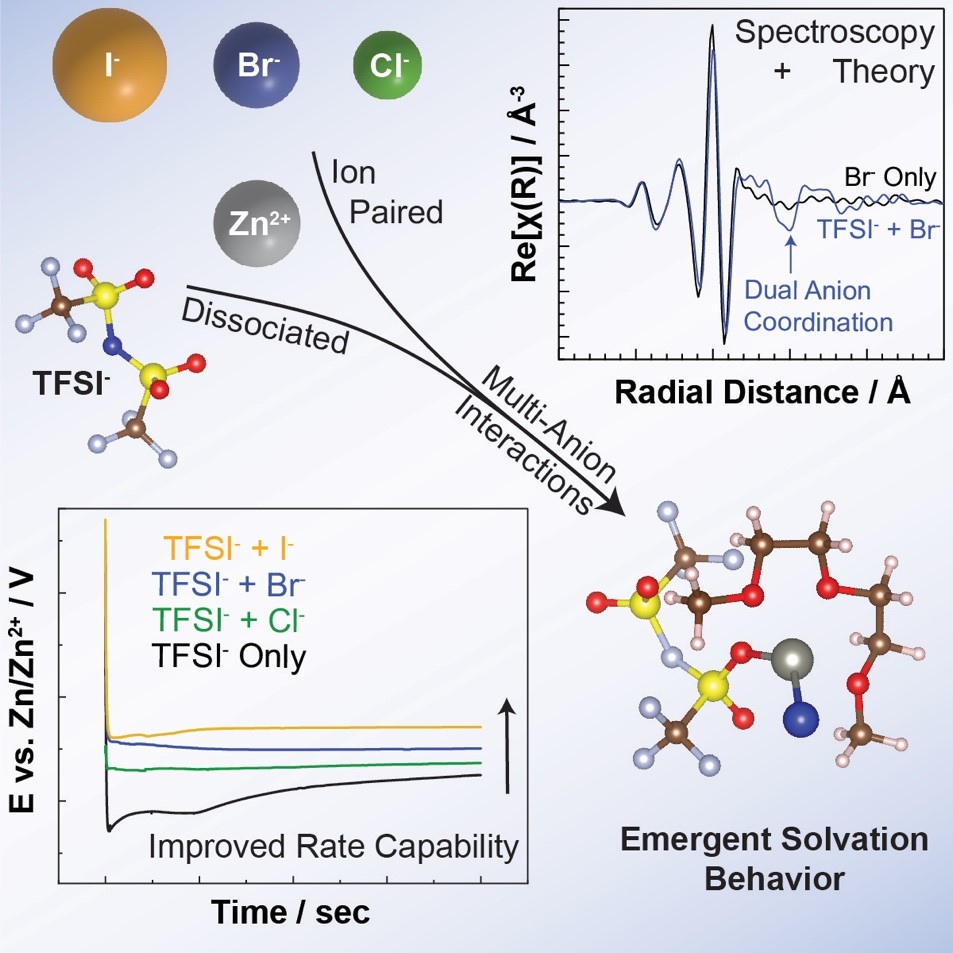Energy Conversion and Storage
Advancing fundamental knowledge of electrochemical phenomena is critical for development of new technologies that enable a future powered by renewable energy, with clean water, and abundant resources. To accomplish this mission, we implement a multidisciplinary approach that integrates approaches of surface electrochemistry with solid-state science.
We rely on a diverse range of electroanalytical methods coupled with imaging, spectroscopy, and mass spectrometry, ex-situ and operando, to generate a holistic view of the key features that govern the properties of electrochemical materials and interfaces. We research a broad range of electrolytes, aqueous and non-aqueous, and electrode materials, from single crystals to thin films to nanocrystals. We seek to track phenomena from the bulk of an electrode to the bulk of the electrolyte, and across the interfaces. Armed with fundamental relationships, we design, synthesize, and evaluate the next generation of materials with advanced capabilities for future electrochemical systems.
Our team collaborates closely with other groups in the Materials Science Division, notably, Synchrotron Studies of Materials, Molecular Materials, Emerging Materials, Neutron and X-Ray Scattering, Functional Nanoscale Heterostructures, Soft Matter and Biomolecular Materials, and Superconductivity and Magnetism. Our team also works with an international network of collaborators whose expertise complements our own capabilities. We are users of major DOE facilities, primarily the Advanced Photon Source and Center for Nanoscale Materials at Argonne and have connections to universities such as the University of Illinois Chicago, Northwestern University, University of Chicago, and Northern Illinois University.




